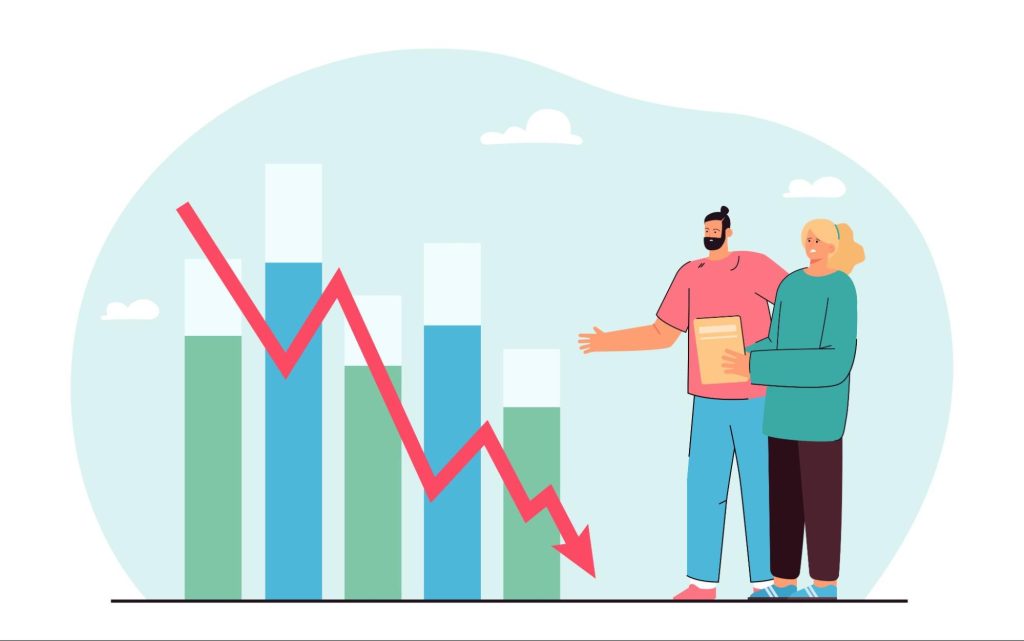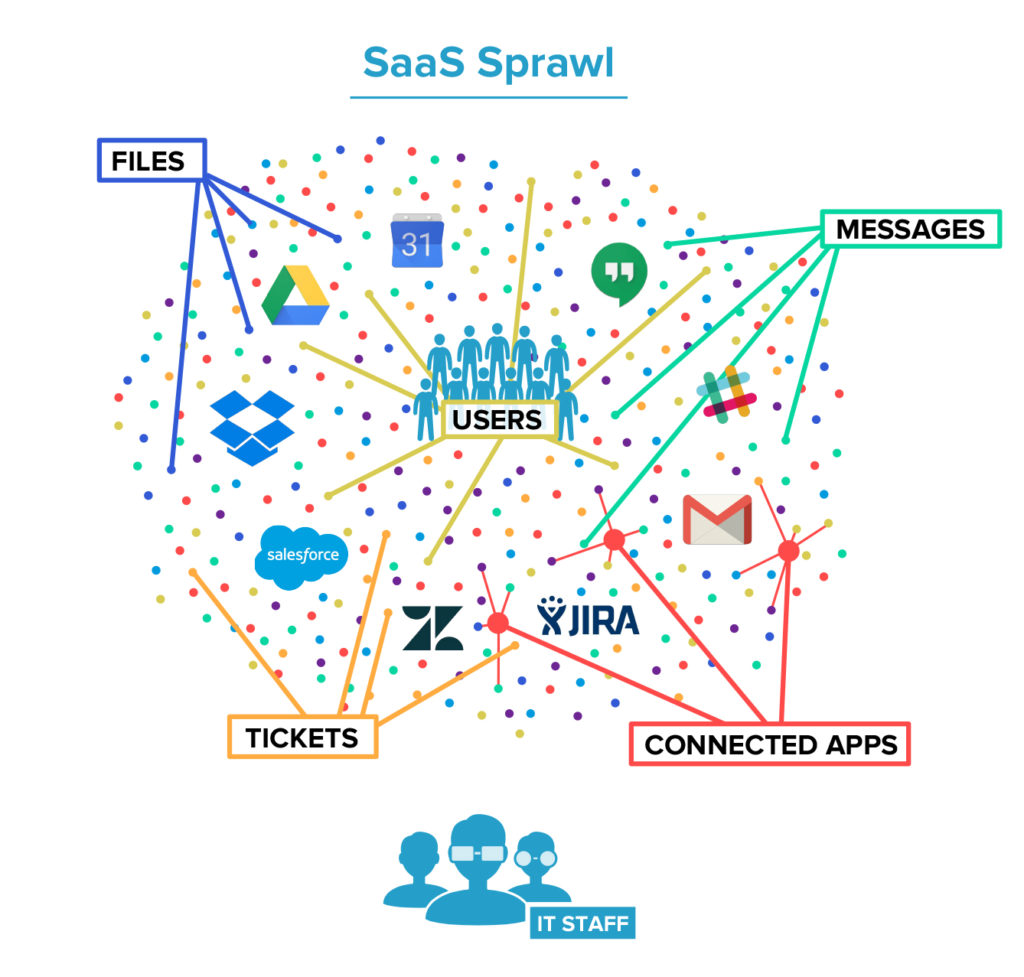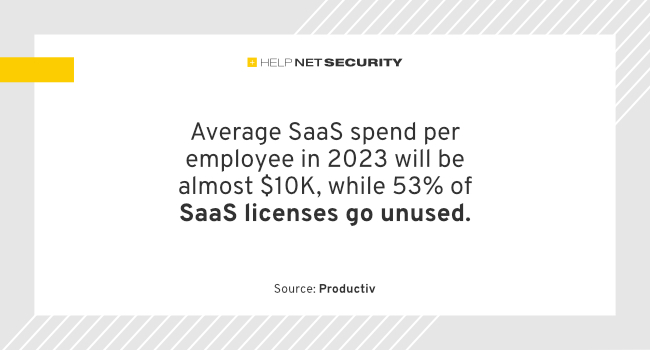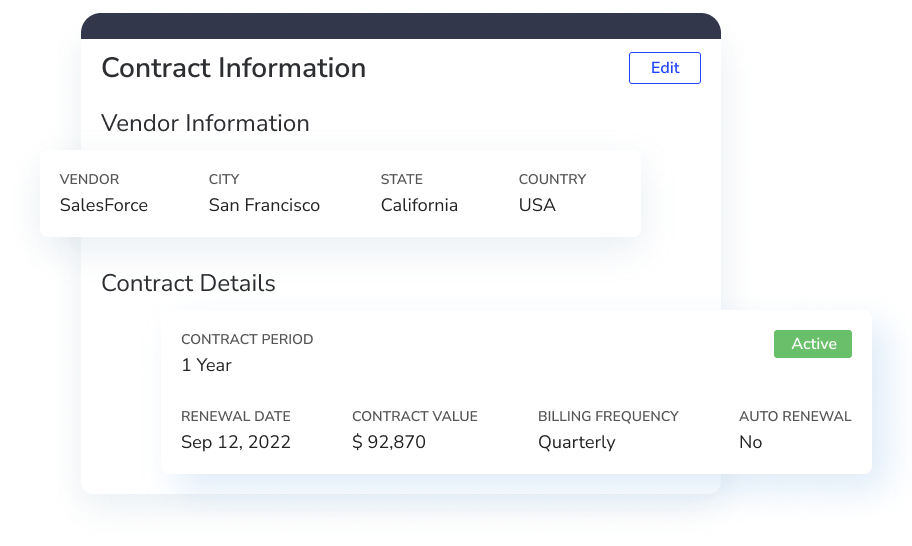Adopting SaaS solutions has become critical for businesses seeking to remain competitive and agile in today’s dynamic business market.
However, among the benefits lies a hidden challenge—an issue that often goes overlooked but can substantially impact an organization’s bottom line. The problem at hand is revenue leakage caused by poorly maintained SaaS applications.
While these apps improve productivity, collaboration, and innovation, they can also result in monetary losses if not managed properly.
As per Quandary CG The average company wastes $135,000 on unnecessary SaaS tools
This comprehensive guide will uncover five crucial ways your business may be losing money due to SaaS apps. We will unravel these concerns and present practical, concrete solutions, from the creeping growth of SaaS sprawl to the hidden realm of shadow IT.
1. SaaS Sprawl
SaaS sprawl is a widespread issue that enterprises and mid-sized companies have faced recently, which can impact your revenue if not managed properly.
In simple terms, SaaS sprawl is the uncontrolled proliferation of Software as a Service (SaaS) apps within a business. It happens when departments adopt distinct SaaS tools independently, without proper coordination or approval. Moreover, most of these apps frequently have overlapping functions. While this may appear to be a pursuit of productivity, it typically results in inefficiency, duplication, and resource waste.
Businesses lose money in various ways due to SaaS sprawl. They end up paying for the same solutions numerous times, incurring unnecessary costs. Integrating these disparate apps/solutions becomes difficult, resulting in data silos and hampered workflows, which can lead to lost productivity and funds.
Keeping track of user access, licenses, and security becomes complicated and costly. Underutilized subscriptions are prevalent, leading to wasted resources. Furthermore, as managing data gets more difficult, security threats rise.
SaaS sprawl, in essence, drains revenue by increasing expenses, decreasing efficiency, and amplifying security flaws. Centralized SaaS management is critical for reducing costs and increasing productivity.
Solution: Implement a SaaS Management Platform to acquire comprehensive visibility into SaaS app use, allocate limited budgets to departments to avoid overspending, and create a centralized procurement process. Such solutions provide insights into spending trends, assisting firms in optimizing their SaaS stack, lowering costs, and ensuring that every dollar spent is justified.
2. Shadow IT
Gartner reports that in large enterprises, 30% to 40% of IT spending goes to shadow IT.
Shadow IT refers to purchases made without IT authorization or approval, making it difficult for IT professionals to identify these unauthorized applications. Staff may subscribe to cloud services or buy software without obtaining the requisite approvals, resulting in duplication costs, conflicting licenses, compliance hassles, and a lack of centralized IT resource management.
Tracking and handling shadow IT can be difficult for the IT department without application visibility. These unsanctioned apps cause compliance issues and security breaches in the worst-case scenario.
As a result, organizations will end up spending more to rectify these issues, which will take a toll on revenue. You don’t want the management costs to go above the ROI of the application.
So, find shadow IT as soon as possible and eliminate sanctioned free apps from your portfolio to keep your stack secure and realize SaaS savings.
Solution: Use SaaS Management Applications to monitor app purchases, detect unwanted software installations, issue notifications, and centralize application management. Organizations can use these apps to set policies and access controls, ensuring only approved software is utilized. They also propose corrective actions to prevent future shadow IT instances and reduce wasteful expenses.
3. Unused applications and licenses
Organizations frequently purchase licenses in excess of their requirements, resulting in poor ROI and underused resources. Many businesses pay for more licenses than they use.
Unused licenses can have a significant financial impact on the bottom line. Without insight into application utilization, enterprises continue to pay for software that provides no value.
Unused applications in a company are more than inactive assets; they can also be silent revenue killers. When staff have access to software that is not being used, it results in recurring costs with no corresponding gains.
This financial leak immediately reduces an organization’s revenue streams. Furthermore, it represents an immediate financial loss and a wasted opportunity to utilize software investments fully.
Solution: Use SaaS Management Apps to monitor user activity and detect unused licenses. These tools provide insights into which licenses are required and which can be reallocated, allowing businesses to minimize their software investment. They also help with vendor negotiations by providing data on usage and user trends, ensuring that companies get the most out of their contracts.
4. Auto-renewals
Organizations that track renewals through spreadsheets often miss their calendar, and their contract will end up getting auto-renewed, leading to excess spend.
Auto-renewal clauses in SaaS contracts can impact your revenue if you don’t track it effectively. Ensure that you remove the clause while signing the contract. Organizations that do not aggressively manage their renewals risk being stuck in contracts with unfavorable conditions and missing out on opportunities for negotiation.
Solution: You need to automate your renewals using workflows. This will help businesses track contract expiration dates and send out automated reminders.
Reminders will give a heads up to the teams so they can review contracts before renewal, analyze usage, and create a better negotiation plan. This guarantees that contracts align with current needs and financial limits, resulting in less needless spending.
5. Poor vendor negotiations
We saved the best for last; poor negotiations have been a major driving factor behind organizations losing revenue. Most organizations have a lean procurement team that lacks the bandwidth to negotiate efficiently.
They shortlist a vendor and enter negotiations without understanding their requirements. This makes it a recipe for the SaaS vendor to upsell their product, and they end up paying for features they don’t need.
SaaS vendors will persuade teams to purchase additional licenses if your business grows; unfortunately, months will pass, and you’ll end up with unused licenses and wasted spend, impacting your ROI.
Lack of pricing benchmarks is another issue that organizations have to deal with. They don’t know what others are paying in the market, so they’ll pay whatever the vendor quotes, resulting in escalated costs and budget overruns, affecting revenue.
Solution: Train your team on how to negotiate if your team lacks the bandwidth to handle vendor negotiations. You can seek help from expert assisted buyers; they will work as an extended part of your team, analyzing business requirements, negotiating with vendors, and ensuring you purchase the right product at the right price.
Conclusion
The present-day business landscape is plagued by revenue leakage from numerous factors related to SaaS applications. Unchecked SaaS sprawl, Shadow IT, the subtle but significant drain caused by unused apps, and the overlooked auto-renewals all contribute to enterprises losing revenue.
These challenges above highlight the crucial importance of proactive SaaS ecosystem management and monitoring. Businesses must identify these concerns and implement corrective measures to avoid losing revenue due to SaaS apps.







